FS Colour Series: Sand inspired by Maurice de Vlaminck’s Flames of Yellow
Sand linen’s full bodied saffron yellow was a favourite with French painter Maurice de Vlaminck, setting his paintings alight with warm, iridescent flames of colour. Central to Vlaminck’s practice was the relationship between colours, which could express riotous outbursts of emotion, with his distinctive shade of mustard yellow playing a top note above the rest. Reflecting on his high key colour combinations Vlaminck wrote, “I heightened all my tone values and transposed into an orchestration of pure colour with every single thing I felt. I was a tender hearted savage filled with violence. I translated what I saw instinctively, without any method, and conveyed truth, not so much artistically but humanely.”
Vlaminck was a studious soul by nature, with a natural flair for music and literature, yet through painting he found an outlet for deeper emotional expression. His first forays into painting came after a chance meeting with the painter Andre Derain during military service when he was 23 and the pair formed a close friendship that would last a lifetime. Derain encouraged Vlaminck’s latent, aspirational desires to make art, and in 1900 they rented a studio together in Chatou, outside Paris, where they met Henri Matisse and began in earnest to explore the free, liberated colours on canvas that would come to be known as Fauvism (French for “the wild beasts” coined by the Jewish art critic Louis Vauxcelles).
Vlaminck spent over a decade living and working in the small, leafy town of Chatou, a tranquil, neutral setting providing an ideal platform from which he could jettison off into the wild realms of self-expression and abstraction. The Gardener, 1904 burns with a golden yellow light, set against searing hot reds squeezed directly from the tube, tempered with a smattering of green and blue. In Houses at Chatou, 1905, real life is flattened into frenzied horizontal ribbons rippling with energy and life. Strands of golden yellow play a vital role in creating depth and light, sparking against complimentary electric blues and fiery reds. Reflecting back on this time, Vlaminck wrote, “I was a barbarian, tender and full of violence. I translated by instinct, without any method, not merely an artistic truth but above all a human one.”
A year later Vlaminck’s palette had softened, as seen in The Seine at Chatou, 1906, where quiet blues and greens gently flicker with light while the rich, weighty yellow in the foreground becomes the main focus, drawing our eye in by adding warmth, weight and volume in the foreground. In La Partie de Campagne, 1906 yellow takes centre stage again, enveloping a young couple with circular, sweeping golden strands that nestle together with earthy greens and oranges to suggest the baking heat of a summer afternoon.
In the following years Vlaminck’s colour palette continued to soften and mellow, yet his fascination with the warmth yellow could ignite in a canvas continued. In 1913 Derain urged Vlaminck to join him on a painting trip to Martigues, to celebrate “the light and charm of Provence.” Vlaminck spent the entire summer there, making works including Landscape near Martigues, 1913, in which sandy yellows suggest the parched Provencal undergrowth beneath the glare of the hot sun, while paint applied in a patchy network of flat brush marks reveals the influence of French painter Paul Cezanne.
After the First World War Vlaminck settled in the rural village of Rueil-la-Gadeliere, where his saturated colours were replaced with muted, sombre tones, as if the fire in his belly had burned down into subtle, glowing embers. Moody, contemplative skies were set against bristling yellow fields of heat, energy and light, such as Champ de Blé et Maisons, 1928 and Bottes de Paille, 1945, revealing, even in the midst of darkness, the uplifting and transformative power of hot, fiery yellow.





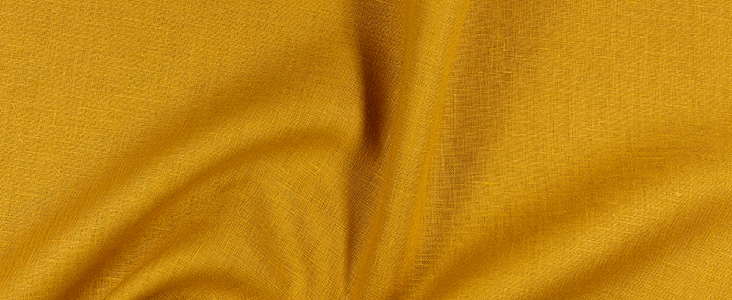

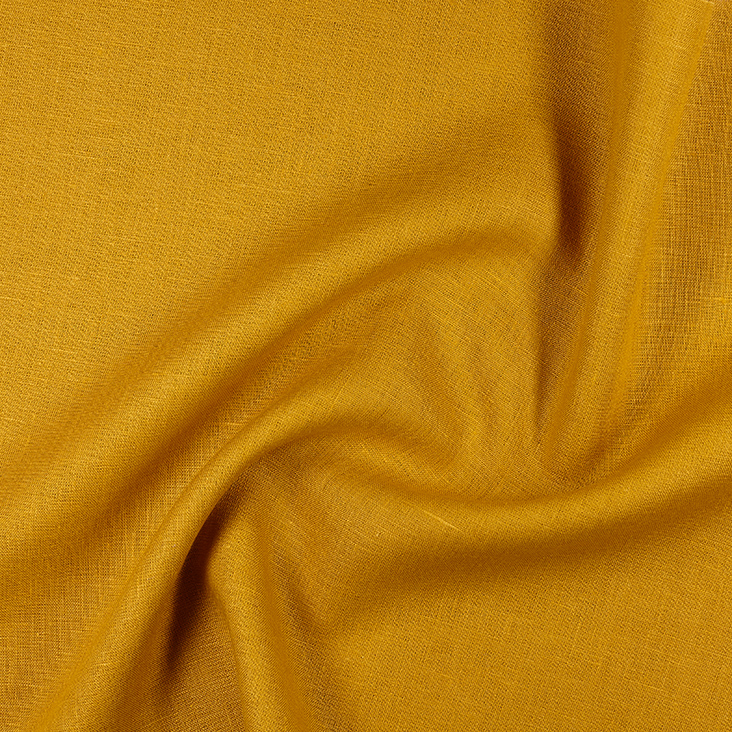
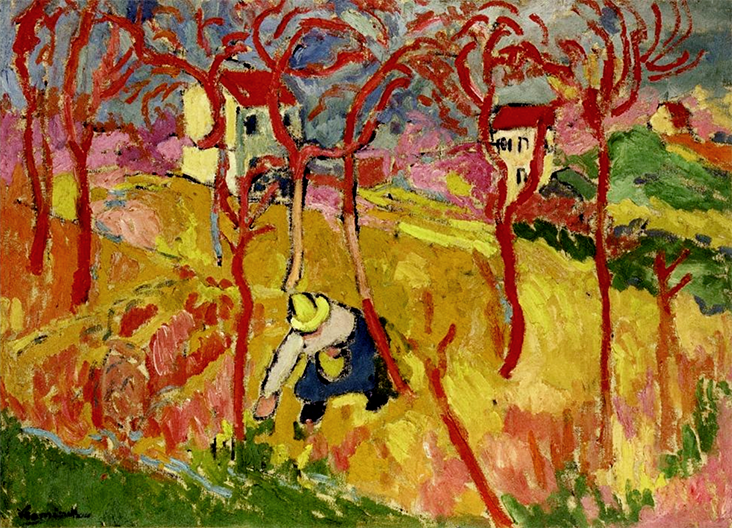
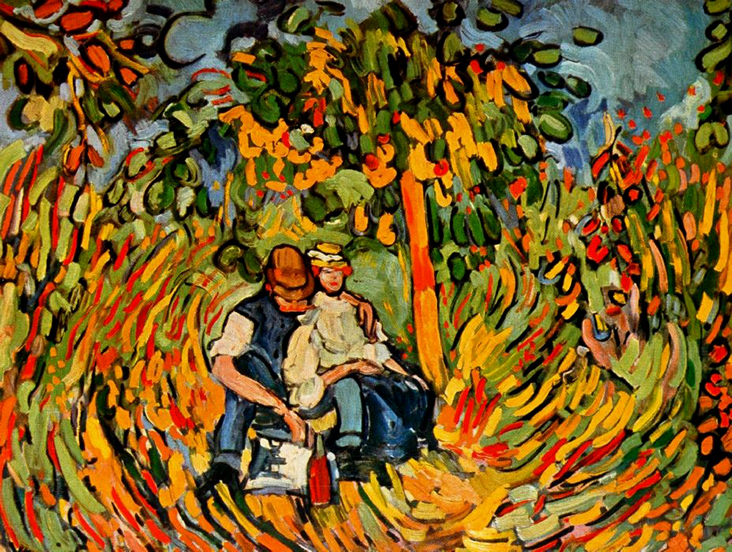
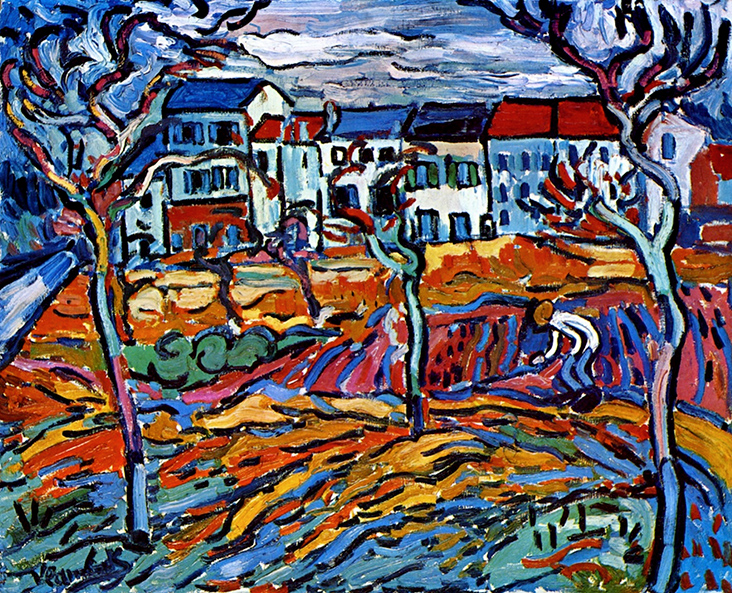
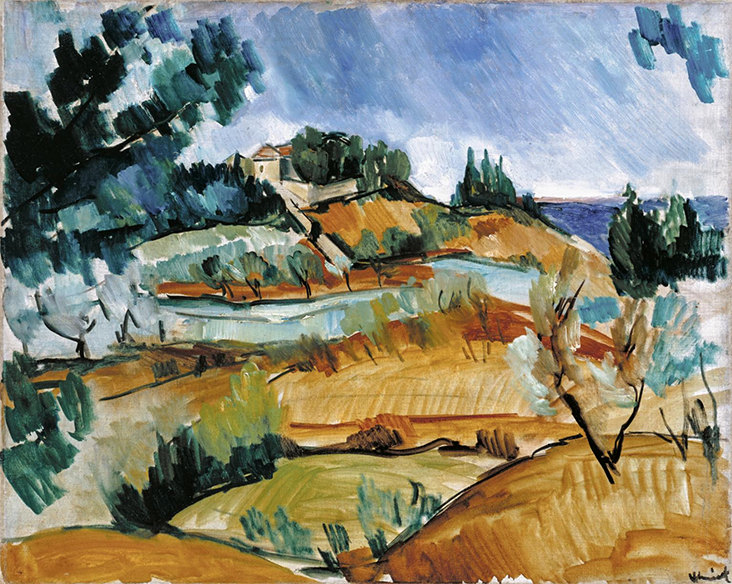

















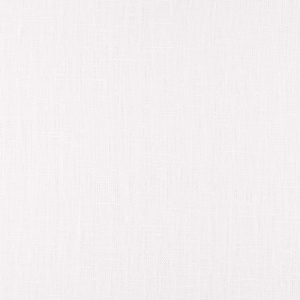




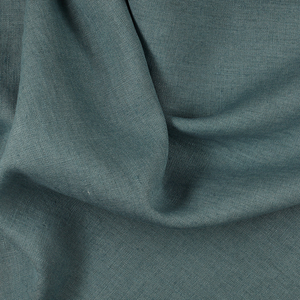


















Leave a comment